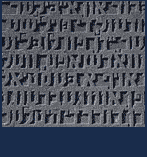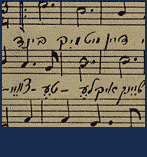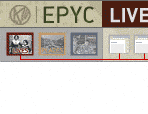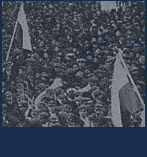

Yiddish, A Fusion Language


The famous linguistic scholar Max Weinreich called Yiddish a "fusion language". What should we take this to mean? Indeed, it might surprise you to learn that most modern languages derive from other languages, what linguists call "stock languages." English, for instance, derives from the "stock languages" Danish, French, and Latin (and has a sprinkling of "loan words" from yet other languages, even Yiddish and Hebrew). English only appears to be one pure system to English speakers who are neither connoisseurs (French-derived) nor mavens (Yiddish-derived)-or who are simply not concerned with the derivations of their words on a day-to-day basis.
Yiddish is similar to English in just this way. The main components of Yiddish derive from German, Hebrew, and several Slavic languages (especially Polish and Ukranian). Moreover, we can generally recognize which words derive from which stock language. Now we begin to understand how Yiddish is different from English. Yiddish was almost always spoken by bilingual or multilingual speakers; not all Yiddish speakers spoke Polish, for instance, but they often realized when they were speaking with Polish-derived words, or, for that matter, German- or Hebrew-derived words. The reason for this is simple: unlike English speakers who mostly lived among other English speakers, the Jews lived among speakers of other languages. At times they lived among Germans, at other times among Poles or Ukrainians. Moreover, depending on the linguistic or cultural context they were in, Jews would emphasize the Slavic words in their vocabulary or the Hebrew ones.
Internal Bilingualism: Yiddish and Hebrew
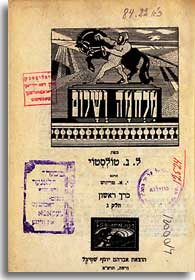

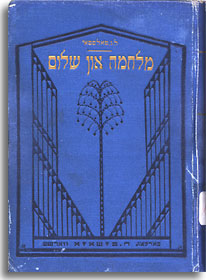

Internal bilingualism in the context of Jewish Eastern Europe refers to the two Jewish languages that took on complementary functions within the Jewish sphere. On a basic level, Hebrew was the holy language as compared to the Yiddish vernacular, which was the language of daily speech. Hebrew was bound more closely to written text so it follows that Hebrew became associated with men in the community-who received and benefited from formal training that was not commonly available to women. But these dichotomies simplify the reality. Hebrew was the language of Jewish prayer, of the Bible and the Mishnah (the collection of post-biblical laws and rabbinical discussions of the 2nd century CE, forming part of the Talmud), and therefore was the language used for scholarship and education. However, Yiddish also had an important role in the sphere of the learned. For example, the same letter or responsum a rabbi wrote in Hebrew he then relayed orally in Yiddish. Yiddish also was the language in which Talmudic debate played out. Also, the tales and teachings of the Hasidic rebbes were told and written in Yiddish. Although it is true that few women learned Hebrew, many men knew only enough Hebrew to read their Siddur (prayer book). Ostensibly written for female readers alone, Yiddish prayer books (tkhines in Yiddish) and popular translations of the Bible (tsenerene) were in reality read by men and women alike. Yiddish played a role on certain religious occasions as well. Yiddish song was customary at any Jewish wedding and Yiddish songs and plays were central to the celebration of Purim. Although Hebrew was the language of the synagogue, its words, idioms, and structure permeated Yiddish. But without a clear divide between the religious and secular, yidishkayt infused all areas of Jewish life.









